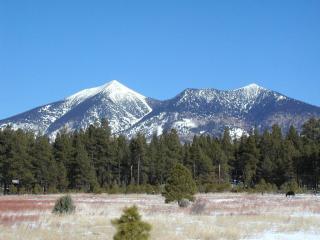by Stephanie Mack and Sophie Ell
Originally published on Celebrating New Mexico Statehood, 6/10/2016
Tony Hillerman is well known for his ability to paint the majestic landscape of the American Southwest; however, the beautiful landscapes and thriller plots need characters to fill the pages and make the stories come to life. Character development, then, is what gives the stories depth, and since Hillerman’s main characters are Native Americans, their inner lives function as gateways into Native cultures and traditions that many of us are not thoroughly familiar with. Through these characters, Hillerman touches on contemporary issues that are important for Native Americans. In The Ghostway, for example, Hillerman introduces the problems of colonization and its negative effects on Native American identities. Identity can be understood as, “…the set of personal and behavioral characteristics which define an individual as a member of a certain group.” Identity is at the core of a person and the group to which they belong.
Initially, Hillerman presents the identities his two main Navajo police characters as stark contrasts to each other. First, there was the legendary Joe Leaphorn, with his no-nonsense attitude and general skepticism. The construction of Joe’s character paved the way for the more traditional and optimistic Jim Chee. In the beginning, we see Jim Chee emerging as a very different kind of character than Leaphorn. Jim Chee knows who he is in the Navajo world and is even training to become a Navajo singer or Hatałii. However, in The Ghostway takes Chee’s character in a different direction. Gone is the man who is sure of his own identity and instead Chee is a mess. Chee has found the love of his life, an Anglo named Mary Landon from Wisconsin, but their relationship is in danger. Chee wants Mary to stay on the reservation and become part of the Navajo community. Mary; however, wants Chee to leave the reservation and join the FBI in Washington. In this instance, moving is more than a change in scenery--it is a shift in identity. Chee feels that if he leaves the reservation and becomes an FBI agent, he cannot maintain his Navajo identity: “Either he stayed Navajo or he turned white. Either they raised their children in Albuquerque, or Albany, or some other white city as white children or they raised them on the Colorado Plateau as Dinee. Halfway was worse than either way. Chee had seen enough of that among displaced Navajos in the border towns to know. There was no compromise solution” (Ghostway, page 8). In common terms, Jim Chee is having an identity crisis.
Chee’s intense inner conflict underlines a prevalent issue that afflicts all Native Americans in the U.S. Centuries of colonialism and a long history of oppression, dispossession, and forced assimilation by the U.S. Government have negatively affected indigenous cultures across the country, and the historical events still have lingering effects. The loss of a homeland and sense of place, or the loss of religion, language, and traditions are but a few of the problems that challenge Native American identity today, and although Hillerman only mentions them in passing, they are worth noting and elaborating on. Jim Chee becomes a representative of a culture struggling to survive in a changing world. Accepting a position with the FBI means full assimilation, and while assimilation offers many material opportunities that do not exist on the reservation, it also poses a threat to the Native way of life and to the struggles for decolonization and the preservation of cultural identity shared by all indigenous peoples.

